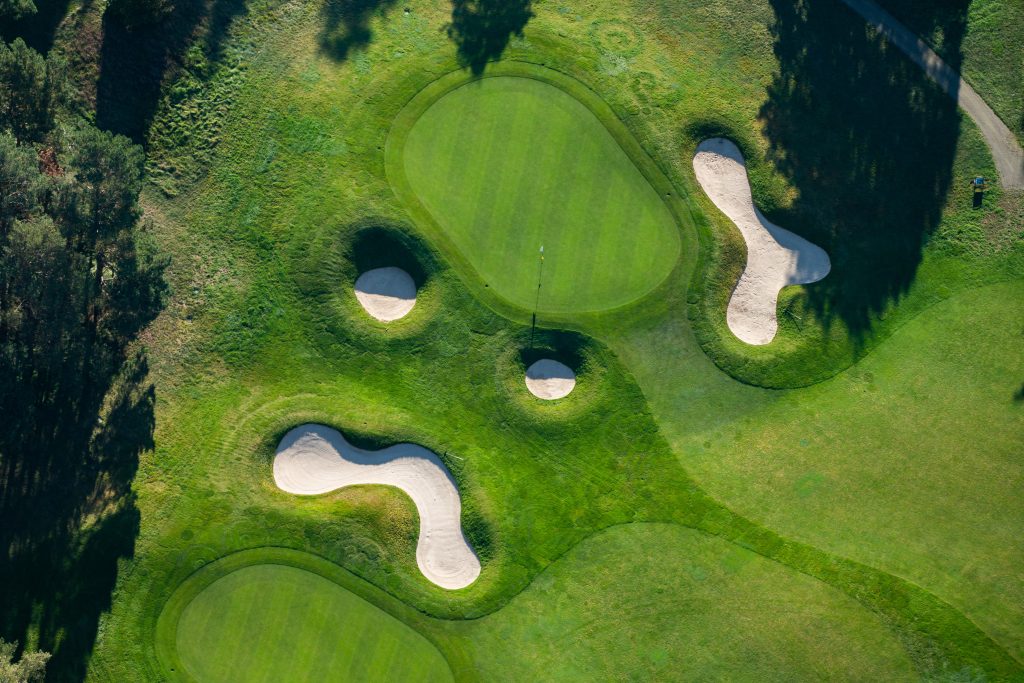
Developing a world-class practice academy begins with a clear vision of how golfers learn. A skilled golf course practise academy designer studies swing-data flow, safety setbacks, and short-game zoning before a single bay is marked on the ground. By integrating insights from launch monitor companies, the designer positions targets at optimal carry distances and builds chipping greens that replicate on-course turf firmness. When a golf course driving range architect collaborates with a golf practice facility development team, the result is a turnkey blueprint that serves beginners and elite players alike. Careful driving range planning and installation also lowers operating costs: gravity-fed ball returns, LED lighting, and drought-tolerant turf reduce annual utility spend significantly. This blog explains how a phased driving range construction services schedule keeps revenue flowing while upgrades proceed, and shows how a modular golf academy design and build approach allows future tech add-ons without major redesigns. For club boards and real estate developers, this roadmap proves that smart academies raise lesson revenue, member engagement, and property value—all within a predictable budget.
Today’s golfer expects more than just a patch of grass and a few flags. Golfers at every level—from beginners to tour professionals—are turning to data, coaching aids, and repetition to refine their skills. A practice academy designed with these demands in mind becomes an asset for any course or club. It must combine functionality, safety, and inspiration to keep players engaged and returning.
The layout of a practice academy is a science. A seasoned golf course practise academy designer evaluates safety buffers, wind patterns, and player workflows. Accurate target placement helps golfers visualise shots while ensuring consistent carry distances. Integration with technology like TrackMan and Toptracer provides feedback loops that make every practice session count. The design allows both individual improvement and structured coaching.
A thoughtful golf course driving range architect ensures the range mirrors on-course experiences. Greens are contoured to replicate real-play scenarios, and bunkers are placed strategically for shot-shaping drills. Elite training bays are positioned for video analysis and biomechanical feedback. This aligns with the shift in coaching that treats the range as a learning environment—not just a warm-up space.
Redesigning or building a practice academy doesn’t mean revenue must stop. A staged approach using driving range construction services keeps portions of the range operational while upgrades proceed. Netting, temporary targets, and modular hitting stations allow seamless transition between phases. Clubs retain lesson income and member loyalty through construction phases.
Top-end driving range planning and installation now factors in utility efficiency from day one. LED lighting systems, sub-surface ball return systems, and artificial turf options lower the operational costs. Native landscaping and solar-powered tech add further sustainability. Clubs often recover capital costs through saved maintenance within a few seasons.
No design remains static. A professional golf academy design and build strategy uses modular concepts, allowing the addition of putting labs, indoor simulators, or recovery spaces. Infrastructure is laid early for easy upgrades, avoiding costly redesigns. This future-proofs the investment and ensures the academy stays relevant to technological and coaching trends.
Practice academies create lifestyle ecosystems. They drive traffic to F&B outlets, encourage youth development programmes, and draw real estate interest from high-performance enthusiasts. For developers, aligning with a skilled golf practice facility development partner adds value to adjacent plots and builds community around golf engagement, not just weekend recreation.
Golf Design India’s portfolio of expertly planned, technologically rich practice academies places it at the forefront of innovation. With a strong foundation in sustainable practices, real estate integration, and elite golf performance principles, GDI continues to lead as India’s go-to golf course practise academy designer.
An elite golf practice academy combines functional layout, strategic target placement, and integration with launch-monitor technology. It must accommodate players of all levels and include real-play simulation through chipping greens, bunkers, and contoured putting areas.
Yes. With phased construction and smart planning, clubs can maintain revenue. Temporary hitting zones, netting, and partial operation allow teaching programmes and daily usage to continue.
Good design uses native turf, LED systems, and efficient water management to reduce daily upkeep. Sub-surface ball return and energy-efficient lighting also reduce operational expenses.
Technology like TrackMan and Toptracer creates data-driven learning environments. Designers ensure infrastructure supports these technologies without compromising aesthetics or user flow.
Early involvement allows designers to align grading, turf selection, irrigation planning, and future tech integrations. It ensures the project runs smoothly and offers better long-term ROI.
